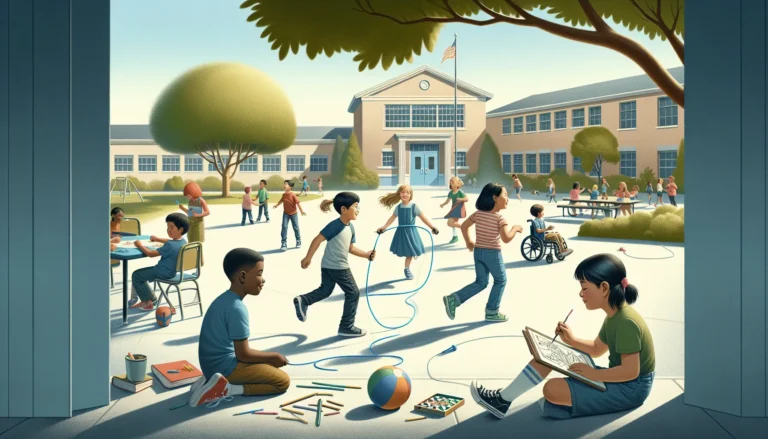In a world where kids prefer screens over swings, Robert P. Pangrazi’s Dynamic Physical Education for Elementary School Children is like a breath of fresh air—or maybe a whirlwind of energy! This engaging guide isn’t just another dusty textbook; it’s a treasure trove of innovative strategies that make physical education fun and effective. Imagine turning a reluctant child into a mini athlete with just a few simple games and activities.
Table of Contents
ToggleOverview of Dynamic Physical Education
Dynamic Physical Education focuses on engaging elementary school children through innovative methods. It encourages active participation, enabling students to develop a positive attitude towards physical activity. Children experience increased motivation due to the book’s emphasis on fun and playfulness in exercise.
Pangrazi’s approach integrates fundamental motor skills, promoting physical literacy in diverse environments. Developmentally appropriate activities cater to various skill levels, ensuring inclusivity among all participants. Classroom teachers can easily implement the strategies, enhancing the physical education curriculum.
The curriculum addresses the needs of children who may resist traditional forms of exercise. Engaging games and cooperative activities foster teamwork, allowing students to build social connections through movement. Moreover, the themes in the book emphasize lifelong fitness habits.
Dynamic Physical Education provides a framework that educators can adapt based on their unique student populations. It highlights the importance of creating an environment where physical activity is enjoyable and essential. Adopting these methods results in children who appreciate fitness and incorporate active lifestyles.
Overall, Pangrazi’s work remains a significant resource for educators aiming to enhance the physical education experience for elementary school children. By understanding the concepts in Dynamic Physical Education, teachers can create a vibrant and impactful program fostering health and well-being in young learners.
Key Concepts from Robert P. Pangrazi
Robert P. Pangrazi’s book emphasizes essential concepts in physical education for elementary school children. It targets motivational techniques and developmentally appropriate practices to ensure student engagement.
Importance of Physical Education
Physical education plays a critical role in child development, supporting physical, social, and emotional growth. Engaging children through movement aids in building confidence, promotes teamwork, and encourages a positive self-image. Regular participation in physical activity contributes to improved focus and academic performance in school. Moreover, fostering a love for movement lays the foundation for lifelong health and wellness. Active lifestyles help combat childhood obesity and instill healthy habits at an early age. Creating an enjoyable atmosphere in physical education classes increases participation rates, making fitness appealing to all students.
Curriculum Structure
Pangrazi’s curriculum design provides a comprehensive framework focused on varied activities that cater to different skill levels. Structured to include age-appropriate practices, the curriculum integrates games and cooperative tasks that stimulate interest and involvement. Each lesson is built around fundamental motor skills that develop coordination and agility. Educators can adapt the curriculum to meet the diverse needs of their classrooms, ensuring all children feel included. Assessments encourage progress tracking and help shape future lesson plans. The flexibility of the curriculum allows for creativity, ensuring that lessons remain fresh and engaging.
Benefits for Elementary School Children
Robert P. Pangrazi’s curriculum enhances physical education for young learners, emphasizing both physical development and social-emotional growth. This innovative approach fosters a well-rounded educational experience.
Physical Development
Physical education significantly contributes to children’s physical development. Engaging in varied activities promotes cardiovascular fitness and builds strength. Children strengthen coordination and agility through dynamic motor skills training. Facilitating movement helps reduce sedentary behavior, combating obesity. Enjoyable physical challenges motivate students to adopt lifelong fitness routines. Equipped with fundamental skills, they gain confidence while mastering complex activities. Daily exercise outlets foster overall health and well-being, supporting sustained energy levels.
Social and Emotional Growth
Social interactions flourish during cooperative activities and games. Through teamwork, children learn to communicate effectively and build friendships. Collaborative play enhances problem-solving and conflict resolution abilities. Developing empathy toward peers cultivates a supportive environment. Positive self-image grows as children achieve goals and receive encouragement. Additionally, physical education nurtures resilience, teaching perseverance in overcoming obstacles. Emotional regulation improves through structured activities, helping children cope with stress. Overall, participation in physical activities develops holistic growth, enhancing children’s social and emotional skills.
Evaluation of the PDF Resource
Robert P. Pangrazi’s “Dynamic Physical Education for Elementary School Children” offers valuable insights for educators aiming to enhance physical education. The PDF serves as a critical resource, combining theoretical knowledge with practical strategies.
Content Analysis
Engaging content highlights innovative teaching methods that promote active participation among students. Each chapter emphasizes the importance of fun in physical education, allowing children to connect joy with exercise. Key concepts, such as physical literacy and developmental appropriateness, are seamlessly integrated, ensuring inclusivity for diverse skill levels. The curriculum includes game-based approaches, which attract even reluctant learners, encouraging their involvement. Structured lessons focus on essential motor skills to enhance coordination and agility. Overall, the content provides robust guidelines for fostering a positive attitude towards physical activity.
Practical Applications
Educators can implement various strategies suggested in the PDF to adapt lessons effectively. Incorporating cooperative games fosters teamwork and builds social skills essential for children’s development. Practical applications also involve monitoring student engagement and progress through assessments tailored to each lesson. Activities designed for different skill levels ensure that every child participates meaningfully. Teachers can create a flexible framework, making adjustments based on student needs and preferences. Daily routines focused on varied activities promote lifelong fitness habits, maximizing health benefits for all students.
Recommendations for Educators
Engaging elementary school children in physical education requires tailored strategies. Integrate innovative game-based approaches from Pangrazi’s curriculum to attract reluctant learners. Prioritize fun in lessons to connect joy with exercise. Create a flexible framework that adapts to unique student needs, ensuring inclusivity for varying skill levels.
Implement cooperative games to enhance teamwork and build communication skills among students. Monitor progress through consistent assessments, which allow for adjustments in teaching methods. Foster a positive environment by celebrating small achievements, encouraging children to embrace physical activity.
Utilize the resourceful insights from Pangrazi’s book to enhance lesson planning. Employ creative activities that emphasize essential motor skills, such as coordination and agility. Incorporate regular physical challenges to motivate students and instill lifelong fitness habits.
Focus on holistic development by encouraging social interactions through structured activities. Highlight the importance of emotional regulation and resilience during cooperative play. Support students’ growth by engaging them in problem-solving experiences, contributing to their overall social-emotional well-being.
Provide opportunities for daily exercise, fostering improved focus and academic performance in the classroom. Encourage collaboration among students through group tasks, developing empathy and conflict resolution skills. Ensure lessons remain fresh and engaging by frequently updating activities based on student interests and feedback.
Conclusion
Robert P. Pangrazi’s “Dynamic Physical Education for Elementary School Children” serves as a vital resource for educators aiming to enhance physical education. By prioritizing fun and engagement, it transforms traditional approaches into dynamic experiences that resonate with today’s children.
The curriculum’s emphasis on inclusivity and developmentally appropriate practices ensures that every child can participate and thrive. Through innovative strategies and cooperative activities, it fosters not only physical skills but also social and emotional growth.
Ultimately, Pangrazi’s work equips educators with the tools needed to inspire lifelong fitness habits and promote holistic development in young learners. Embracing these principles can lead to healthier, more active children who enjoy the benefits of physical activity.





